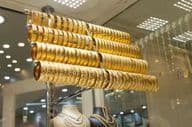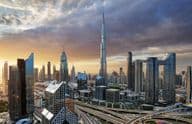Scorching Arabian Summer Arrives at Full Force

The hottest period of summer has officially commenced in the United Arab Emirates, known in the region as the Jamrat Al-Qaid season. This period began at dawn on July 3, when the first star of the Gemini constellation appeared on the eastern horizon, signaling the start of the peak summer season. In the coming weeks, extreme dryness, hot desert winds, and temperatures exceeding 50°C will dominate the weather.
What does Jamrat Al-Qaid mean?
Jamrat Al-Qaid is not only an astronomical event but also a long-observed climatic phenomenon in the region. It is one of the hottest and driest spells of the year, marking the second and most intense phase of the Arabian Peninsula's summer season. The heat intensifies until August 10 and becomes particularly unbearable in desert areas.
What can we expect?
According to weather forecasts, daytime high temperatures in some areas may exceed 50°C, while the ground surface temperature can rise to as high as 65°C. Along with this, optical phenomena such as mirages and tornado-like dust whirlwinds are expected.
However, the biggest challenge is posed by the desert winds known as samoom, which are hot, dry, and very strong. These winds often last for days, exacerbating the heat sensation while reducing humidity below critical levels.
Series of heatwaves
Heatwaves, also known as heat surges, are characterized by temperatures at least 3°C above the usual average for this time of year and this extreme condition lasting for a minimum of two days. These heatwaves not only cause discomfort but also pose real health and infrastructure challenges.
On May 24, even before the peak summer, a temperature of 51.6°C was recorded at 1:45 PM in the Sweihan area, near Al Ain. This was the highest temperature of the year in the UAE so far, foreshadowing a quick and early start to the extraordinary summer period.
Why is this period special?
The Jamrat Al-Qaid period is not just about the heat. This time has been part of the ecological and agricultural cycles on the Arabian Peninsula for centuries. Shepherds, farmers, and meteorologists have traditionally adjusted their activities according to these astronomical phenomena, as the period foreshadows summer crop yields and water resources.
How to prepare?
Avoid outdoor activities between 10:00 AM and 4:00 PM when the sun's rays are strongest.
Drink plenty of water and electrolyte-replenishing fluids, as dehydration can occur rapidly due to the dryness.
Protect the elderly and children, who are more susceptible to heatstroke and heat exhaustion.
Do not leave living beings or flammable objects in cars, as the internal temperature can rise above 70°C in minutes.
Summary
The Jamrat Al-Qaid is not merely a meteorological curiosity but a real, recurring annual challenge that tests infrastructure, healthcare systems, and the adaptability of the population. UAE authorities are prepared for this period every year, but individual precautions are equally important for safety.
(The source of the article is a statement from the National Centre of Meteorology (NCM).)
If you find any errors on this page, please let us know via email.


